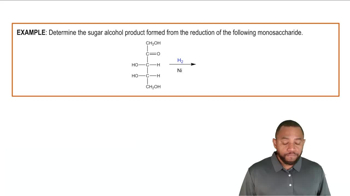Give the abbreviation for each of the following coenzymes:
a. reduced form of NAD+
 Verified step by step guidance
Verified step by step guidance Verified video answer for a similar problem:
Verified video answer for a similar problem:


 2:2m
2:2mMaster Coenzymes in Metabolism Concept 1 with a bite sized video explanation from Jules
Start learning